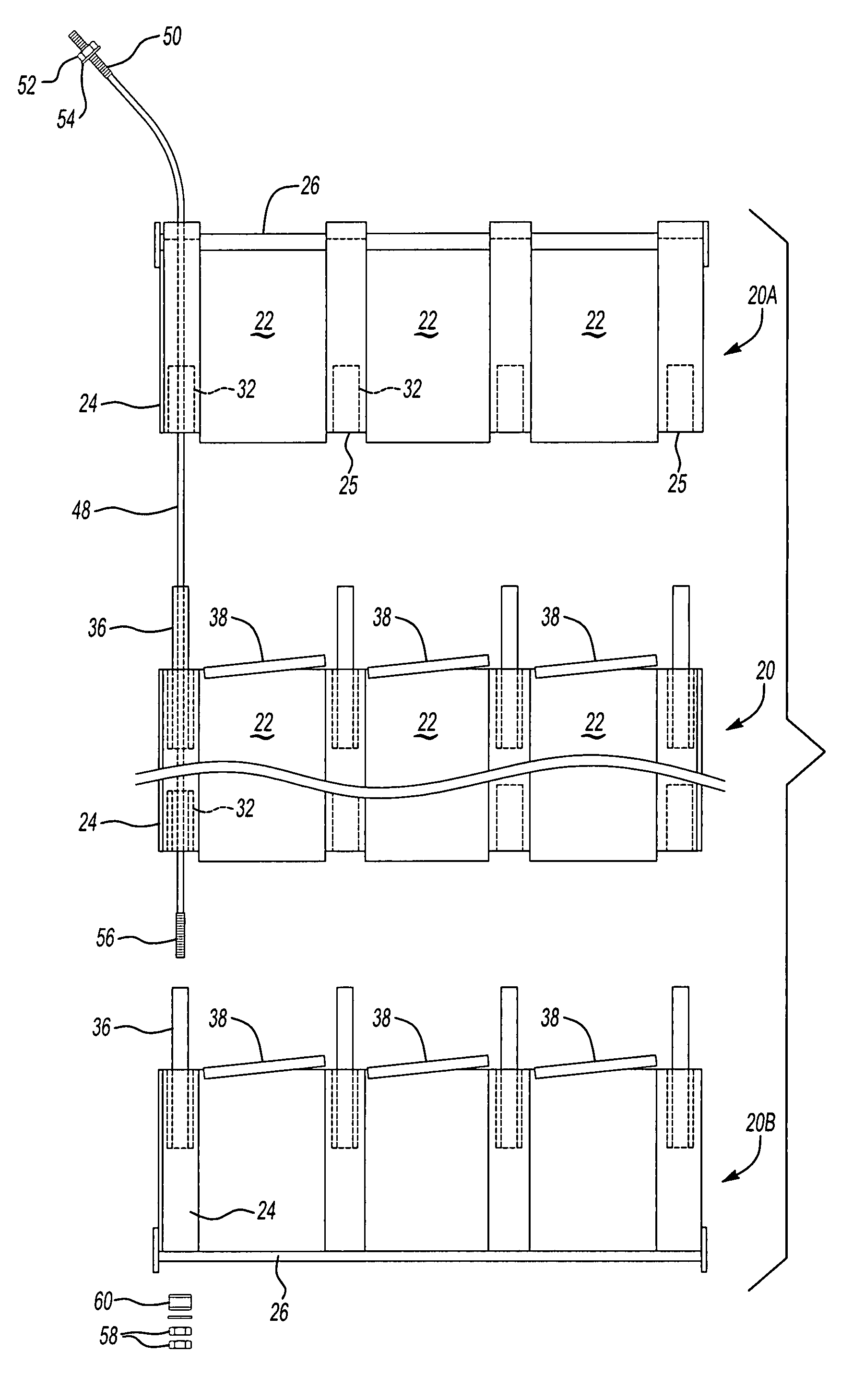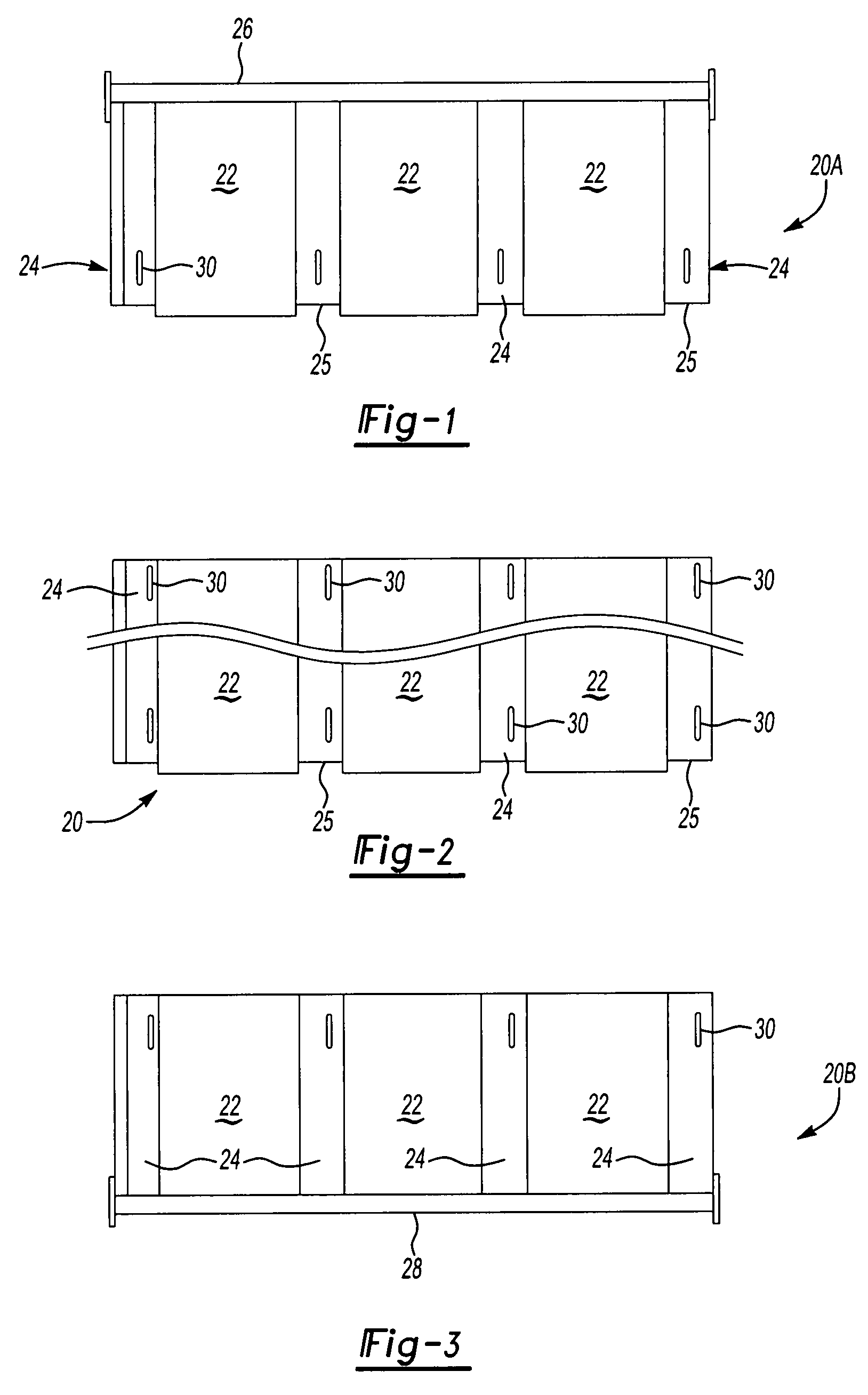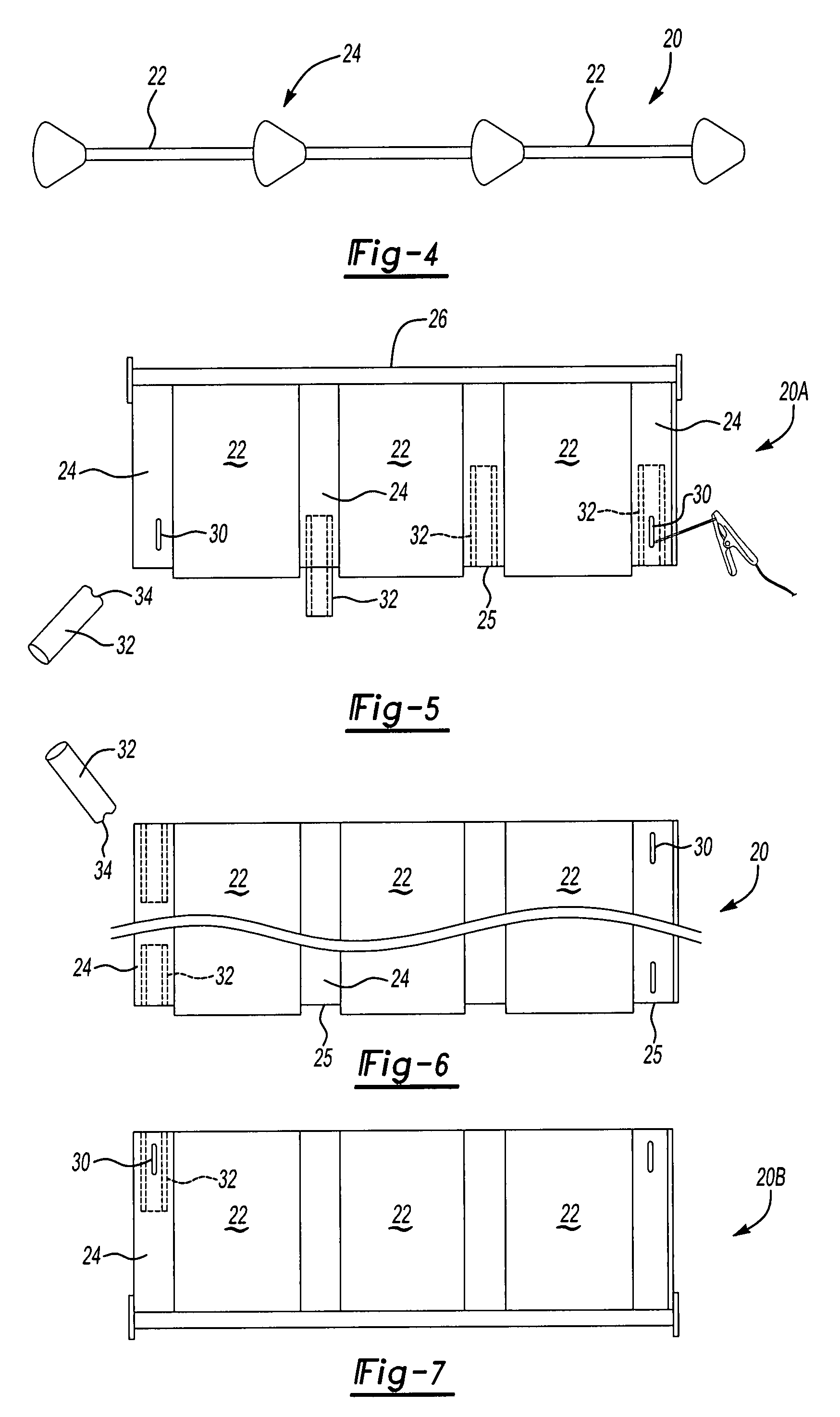Method of making replacement collecting electrodes for an electrostatic precipitator
a technology of electrostatic precipitator and collecting electrode, which is applied in the direction of electrode cleaning, chemistry apparatus and processes, colloidal chemistry, etc., can solve the problems of small diameter wire design, heavy fines and production cuts, and low production efficiency, and achieves easy shipping and maximum electrical conductivity.
- Summary
- Abstract
- Description
- Claims
- Application Information
AI Technical Summary
Benefits of technology
Problems solved by technology
Method used
Image
Examples
Embodiment Construction
[0029]The attached drawings illustrate one embodiment of a method of making replacement collecting electrodes for an electrostatic precipitator of this invention. However, as will be understood by those skilled in this art, the disclosed method is provided for illustrative purposes only and various modifications may be made to the disclosed method of this invention within the purview of the appended claims.
[0030]A first step of the method of this invention is to form a plurality of collecting electrode sections 20. In one preferred embodiment, the collecting electrode sections are identical or substantially similar to reduce cost and simplify construction as described below. FIGS. 1 to 3 illustrate one embodiment of the collecting electrode sections 20, wherein 20A in FIG. 1 is an upper collecting electrode section and 20B in FIG. 3 is a lower section. For ease of description, the collecting electrode sections will be referred to generically by reference number 20. Each of the colle...
PUM
 Login to View More
Login to View More Abstract
Description
Claims
Application Information
 Login to View More
Login to View More - R&D
- Intellectual Property
- Life Sciences
- Materials
- Tech Scout
- Unparalleled Data Quality
- Higher Quality Content
- 60% Fewer Hallucinations
Browse by: Latest US Patents, China's latest patents, Technical Efficacy Thesaurus, Application Domain, Technology Topic, Popular Technical Reports.
© 2025 PatSnap. All rights reserved.Legal|Privacy policy|Modern Slavery Act Transparency Statement|Sitemap|About US| Contact US: help@patsnap.com



